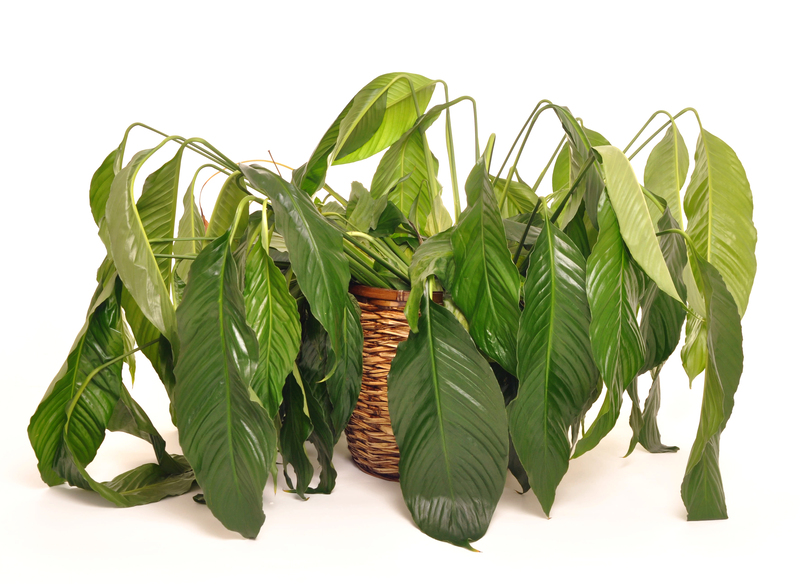Creative Solutions to Guard Your Lawn Against Summer Drought
Summer brings long sunny days, backyard barbecues, and family fun, but it can also mean heatwaves and unrelenting drought that puts enormous stress on lawns. Maintaining a lush, healthy lawn in the face of water restrictions, scorching sun, and dry winds isn't easy. If you're tired of brown patches, thinning grass, and skyrocketing water bills, it's time to try some innovative strategies that offer real protection against drought. In this comprehensive article, we'll explore creative, practical, and eco-friendly solutions to guard your lawn during the harshest summer months.

Why Drought is a Serious Threat to Lawns
Understanding the challenge is the first step toward an effective solution. Drought conditions during the peak of summer create water-deficient environments, causing grass to become stressed, turn brown, and even go dormant. In severe cases, patches of your lawn may die completely, leaving unsightly bare spots. Moreover, prolonged drought can:
- Increase vulnerability to weeds, pests, and diseases
- Reduce soil health and compact the ground
- Lead to higher maintenance costs and time investment
- Result in sparser, less vibrant lawns for years to come
Maintaining a vibrant outdoor space during a hot, dry summer isn't about endless watering; it's about smart, sustainable practices and creative solutions.
1. Choose Drought-Resistant Grass Varieties
Switch to Resilient Grasses for a Robust Lawn
One of the most efficient ways to guard your yard against summer drought is selecting grass types specifically adapted to hot, dry conditions. Not all grasses are alike--some require much less water and outlast long periods without rain. Consider these drought-tolerant lawn grasses:
- Bermuda Grass: Excellent for full sun, adapts well to drought.
- Zoysia Grass: Slow-growing and develops deep roots.
- Buffalo Grass: Native to North America, needs very little water.
- Fescue (Tall and Fine): Especially hard fescue, renowned for drought hardiness.
- Kikuyu Grass: Fast-growing and highly resilient.
2. Improve Your Soil's Water-Holding Capacity
Enhance Soil Structure for Optimal Moisture Retention
*Healthy, well-aerated soil* absorbs and stores water more efficiently than compacted or sandy soil. Investing in your soil's health is a foundational drought protection strategy. Key steps to take include:
- Core Aeration: Use a core aerator to perforate the ground, allowing water and nutrients to reach deeper roots.
- Organic Matter: Top-dress your lawn with 0.25-0.5 inches of compost each spring and fall. Organic matter boosts water retention and feeds beneficial microbes.
- Mulch Clippings: Skip the bag and let grass clippings decompose right on your lawn, returning nutrients and helping shade the soil.
- Clay Breakers: If you have heavy clay, amend it with gypsum or organic material to improve texture and permeability.
3. Smart, Water-Efficient Lawn Irrigation
Tech-Savvy Watering Beats the Heat (and Cuts Waste)
Traditional sprinklers are better than nothing, but they're far from efficient, especially during drought. Upgrade your approach for truly creative drought protection with these ideas:
- Install Smart Irrigation Controllers: Weather-based controllers use sensors and internet data to optimize when and how long your system runs.
- Use Drip or Subsurface Irrigation: Drip lines deliver water directly to the root zone, minimizing evaporation and ensuring less goes to waste.
- Water Early, Water Deep: Irrigate between 4-8 a.m. for maximum absorption and minimal evaporation. Apply longer, less frequent watering so roots grow deeper and withstand drought better.
- Collect and Reuse Rainwater: Install rain barrels or larger cisterns to harvest and reuse water from your roof or gutter system on your lawn during dry spells.
4. Mow Smarter: Height, Frequency, and Mulching
How You Mow Can Make or Break Drought Resilience
Raise your mower! Cutting your grass too short (scalping) exposes soil to harsh sun and speeds up evaporation. Instead, keep your lawn longer (ideally 3-4 inches during heatwaves). Longer blades:
- Shade the soil, conserving moisture
- Develop deeper, stronger root systems
- Help crowd out weeds, reducing water stress
5. Apply Natural Mulch and Ground Covers
Insulate and Beautify Your Lawn's Edges
Mulching isn't just for flower beds! Organic mulches--like shredded bark, pine needles, or even straw--around lawn perimeters, trees, or particularly stressed patches can dramatically reduce evaporation. Alternatively, creative use of drought-friendly ground covers, such as creeping thyme, sedum, or clover, can provide green coverage without heavy water needs.
- Mulch Tree Rings & Borders: A 2-3" ring around trees and along walkways improves moisture retention at lawn edges.
- Replace Thin Spots with Ground Covers: If you have problem areas, swap them out for robust, low-water plants that thrive where grass can't.
6. Reevaluate Lawn Size: Plant for the Future
Shrink Smartly--Increase Drought Resilience and Curb Appeal
Rethink the traditional "all-grass" approach. Creative landscaping with xeriscaping techniques can dramatically cut water use while maintaining beauty and usability.
- Add drought-resistant shrubs or perennial beds for color and interest
- Install hardscaping elements (stone paths, patios) to replace seldom-used grassy areas
- Integrate native plants that require virtually no supplemental irrigation once established
7. Monitor and Maintain Lawn Health
Stay Proactive for Lush Green Even in Dry Months
A healthy lawn is a drought-resilient lawn. Proactive measures make a difference:
- Scout for Pests and Disease: Drought-stressed lawns attract pests like grubs and fungal diseases. Address promptly with organic or targeted solutions.
- Adjust Fertilizer Use: Avoid high-nitrogen fertilizers in summer. Instead, opt for slow-release or organic blends applied before or after peak heat.
- Spot-Treat Weak Areas: Apply extra compost, water, or mulch to problem spots. Reseed or patch bare areas with drought-tolerant blends as needed.
8. Educate Yourself and Embrace New Technology
Leverage the Latest Science and Community Resources
Don't underestimate the value of staying informed. New grasses, irrigation products, and eco-friendly landscaping techniques are constantly evolving. To stay ahead of drought challenges:
- Follow regional university extension offices for lawn care research
- Download water-use monitoring apps for tailored, data-driven irrigation
- Engage with local lawn and garden clubs to swap creative ideas and discover water-saving plants
9. Encourage Deeper Root Growth
Deep Roots Mean Resilience
Lawns that survive summer drought don't just rely on what's above the ground--their strength is in their roots. Deeper roots access moisture that evaporates slowly and are less prone to summer stress.
- Avoid shallow, frequent watering which encourages shallow roots
- Water less often, but more deeply
- Use a screwdriver test: After watering, stick a screwdriver into the ground; if it goes in easily to 6" or more, you've watered deeply enough
- Add a naturally occurring root stimulant such as seaweed extract to support root health
10. Accept Summer Dormancy as a Natural Cycle
Embrace Gold as the New Green
It's important--and liberating--to recognize that some degree of summer dormancy is natural for cool-season lawns (like bluegrass, rye, or fescue). Grass will often go brown to conserve resources, only to bounce back with autumn moisture. During severe drought, focus on survival, not perfection:
- Minimize foot traffic on dormant areas
- Avoid fertilizing until the lawn recovers
- Water just enough to keep crowns alive (about 0.5 inches every 2-3 weeks)

Additional Creative Low-Water Landscape Ideas
- Drought-Friendly Lawn Alternatives: Explore artificial turf or permeable paving stones for trouble areas.
- Colorful Minimalist Borders: Use stones, gravel, or decorative mulch to create visually striking, drought-proof edging.
- Wildflower or Prairie Lawns: Mix native flowers and grasses that thrive in your area for a beautiful, ever-changing tapestry.
- Edible Landscapes: Incorporate herbs and edible perennials like rosemary, thyme, or sage, which are both beautiful and water-thrifty.
Conclusion: Guarding Your Lawn Against Summer Drought is Possible--Creatively!
Guarding your lawn from summer drought isn't about surrendering to brown grass or breaking the water bank. By adopting sustainable practices, choosing drought-resistant plants, improving your soil, and leveraging modern technology, you can create a resilient, beautiful space--no matter how hot or dry it gets.
*With a strategic approach and a little creativity, your lawn can remain a source of pride and enjoyment, even in the toughest summer conditions. Why not start applying these innovative solutions this season and watch your yard thrive where others wither?*